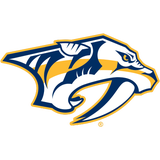
Vancouver Canucks: No Suspension to McLeod for Hit on Sven Baertschi
Vancouver Canucks fans are up in arms after the NHL chose not to discipline Cody McLeod for his questionable hit on Sven Baertschi.
The Vancouver Canucks have had a gripe with the NHL’s Department of Player Safety more than once this season.
Back in November, the DoPS let Nazem Kadri walk after his headshot on Daniel Sedin. Tuesday, Nashville Predators forward Cody McLeod threw a similar hit on Sven Baertschi:
Baertschi left the game soon afterward. Vancouver immediately announced that he had a concussion.
After the Kadri incident, fans in Vancouver were concerned that Player Safety would let this hit go as well. Wednesday morning, their fears were confirmed:
“Accidental collision”… say WHAT?
Intentional Hit
To say that McLeod “accidentally” hit Baertschi is absurd. McLeod did not just skate into a player that he didn’t know was there. He swung his shoulders and lunged at the unsuspecting Canuck forward.
More from The Canuck Way
Maybe the NHL thinks that McLeod was just tracking the puck when he swung his shoulders. But he obviously wasn’t. Whether you are skating or just walking, you don’t turn a corner by blindly swinging your torso in the direction you want to go. Instead, you turn your hips and your torso follows.
No one swings their shoulders like McLeod did if they expect to run into thin air. The only reason to do that is if you are bracing for a hit. Rob Williams illustrated this perfectly.
Now, this is not to say that McLeod was trying to injure Baertschi, or was aiming for his head. It’s only to say that the NHL is out-to-lunch when they call this “accidental” contact. McLeod was clearly throwing a hit.
The Problem with the Headshot Rule
So the question is, should the NHL suspend him for this hit? I say yes.
Unfortunately, the NHL rule for hits to the head (Rule 48.1) is poorly conceived. It forces the Department of Player Safety to focus on minor technicalities, like whether the head was the “main point of contact.”
In the case of the hit on Sedin, Kadri was not suspended because technically he hit Daniel’s shoulder before contacting his head. This time, the NHL apparently tried to avoid the head/shoulder debate by insisting the whole thing was an “accident”.
Coach Desjardins comments on the hit to Sven Baertschi & the disappointing end to Tuesday's 4-2 defeat in Nashville against the Predators. pic.twitter.com/xYdExE74AR
— Vancouver Canucks (@Canucks) February 8, 2017
Regardless, I think the “main point of contact” is the wrong question. So is the question of whether or not it was a “blindside” hit, for that matter.
The play was enough to give Baertschi a concussion (and it was the hit itself that caused the injury; Baertschi’s head did not strike the ice). What difference does it make how much head contact there was? It was enough to cause a concussion. That, by definition, makes it a headshot.
Besides, the hit happened away from the play. McLeod isn’t battling Baertschi for puck possession — the puck is nowhere to be seen. Call it interference or a check to the head. Either way, I’m not sure why the NHL feels the need to give McLeod the benefit of the doubt in this scenario. He chose to hit an opponent behind the play, and caused a head injury in the process.
Want your voice heard? Join the The Canuck Way team!
Speaking as a fan, hits are only exciting when they happen around the puck. Hitting a player who isn’t involved in the play is not fun to watch. It is, however, predatory and unnecessary.
But Rule 48.1 allows hits that cause concussions, which happen behind the play. As long as the head is not the “main point of contact”.
Frankly, it’s nuts.
The Much Better IIHF Rule
Which is why I vastly prefer international hockey’s approach to headshots. IIHF Rule 540 defines a headshot as:
A player who directs a check or blow, with any part of his body, to the head and neck area of an opposing player or ”drives” or ”forces” the head of an opposing player into the protective glass on boards.
The language of this rule is much better. The IIHF defines a headshot as “directing a check to the head or neck area.”
“Main point of contact” does not matter. The intent of the hitter does not matter. If a player contacts an opponent’s head, it’s an automatic penalty.
Plus, in international hockey the penalties for a headshot happen in-game. At best, you get two minutes plus a 10-minute misconduct. If the hit results in an injury, you get a match penalty.
The IIHF rule would have seen McLeod tossed from last night’s game. In that case, he would have thought twice about throwing another “accidental” hit to the head. And that’s the whole point of the rule — to deter players from throwing dangerous hits.
If the NHL is serious about preventing concussions, they should adopt the IIHF rule. Players will start avoiding hits to the head, or else they’ll sit in the penalty box for half a period. Problem solved.
Unfortunately, none of this is any help to Baertschi, who will miss at least one more game. The Vancouver Canucks can only hope this the last concussion they have to deal with this season.
